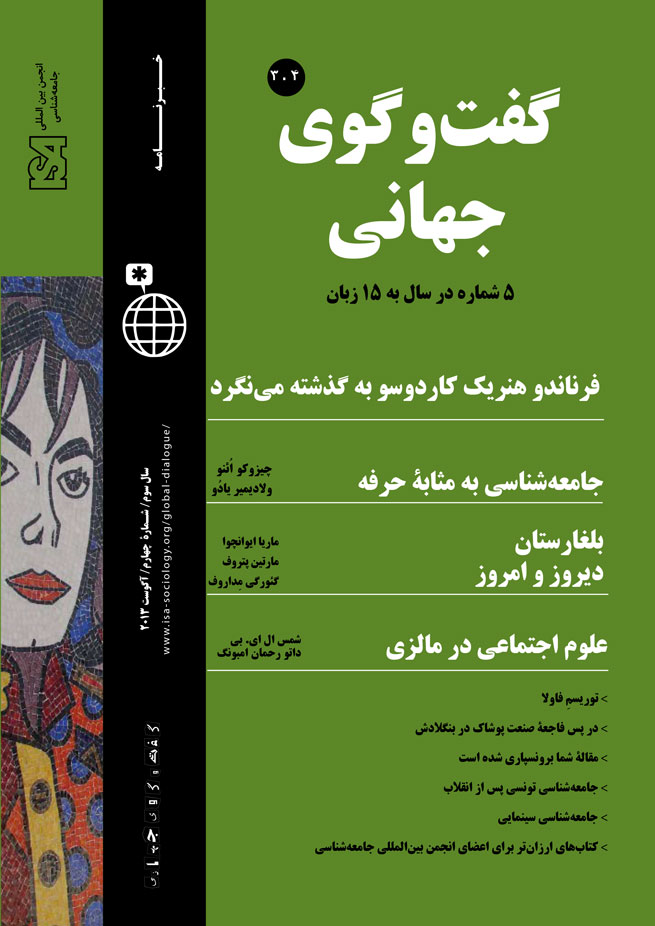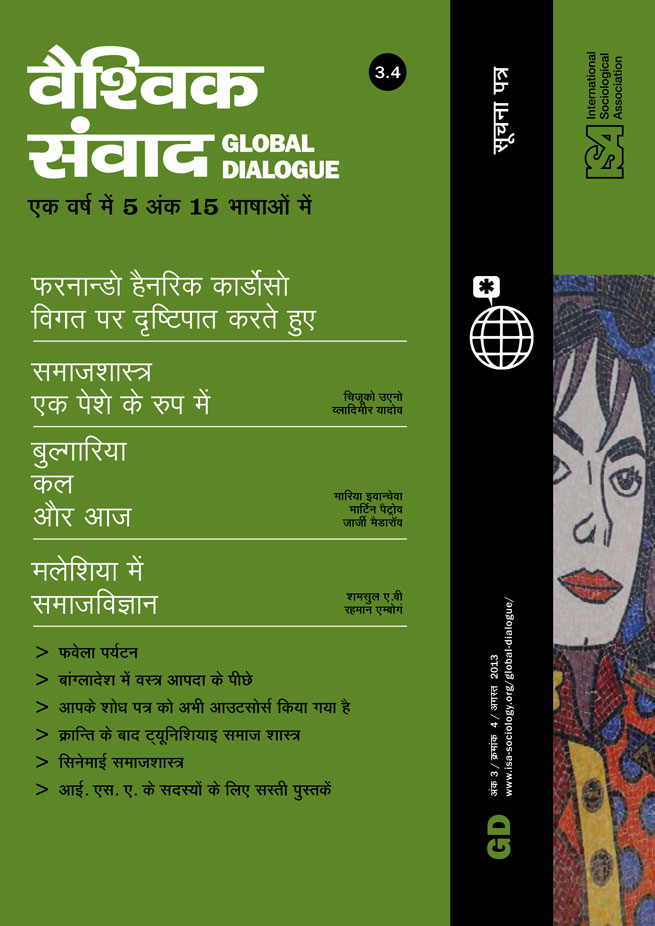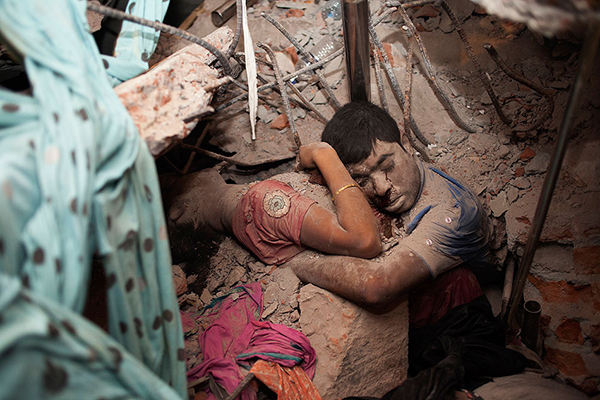Read more about Capitalizing on Poverty

Cheaper Books for ISA Members
by Sujata Patel

Your Paper Has Just Been Outsourced
by Jeffrey Sallaz
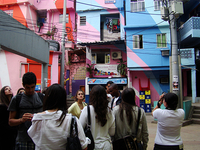
The Traveling Favela
by Bianca Freire-Medeiros
August 17, 2013
The collapse of a factory building in Savar, Bangladesh in April 2013 killed more than 1,100 garment workers. Despite the public outcry, little has been said so far about the underlying systems of exploitation that permitted a disaster of this scale.
Those familiar with the turbulent history of the garment industry know that this industry has been prone to accidents, and that the Bangladesh disaster was something that could have happened anywhere in Asia or Africa. Even then, workers and their unions were slow to react when the Rana Plaza building collapsed in Bangladesh. Instead, the loudest reaction came from the garment wholesalers and consumers in Europe and America, which put a certain spin on the interpretation of this disaster.
“Orientalist” Reporting
“Another preventable tragedy in Bangladesh,” reported the New York Times, a statement echoed by the BBC, Globe and Mail, Reuters, and others, who refused to see this crisis as anything but yet another third-world mishap that has to do with greedy businessmen, corrupt politicians, incompetent bureaucracy, and the large swath of poor with no other options but to put themselves in the line of death. The orientalist perspective was also rationalist, which persuaded the bourgeois shoppers that a solution lay in arrest of the factory owners or fining of their multinational buyers.
The media initially put the blame on Sohel Rana the owner of the ill-fated building, who had reportedly said that the building was safe to enter and work in. Four days later, after the death toll had reached 400, a small group of buyers were made to pay moderate compensation for the victims. A week later and after 700 deaths were confirmed, European Union threatened to revoke Bangladesh’s eligibility for duty-free garment exports into the EU market. A month later and after the death toll exceeded 1,100, Bangladesh government amended the national labor law for the garment industry to allow labor unions. Soon after, the United Nations challenged the legitimacy of the World Bank’s indicators for Doing Business, which had earlier preached the flexibility of labor as a precondition for industrial competitiveness.
Labor organization is at the heart of the garment disaster. Most workers in Rana Plaza died because they had been forced to continue work even after the building walls had cracked and all other businesses had evacuated. Garment workers had no unions to challenge the factory owner. That an industry employing 3.5 million people in a modern, democratic nation remained unorganized points fingers not only at global and local capitalists who control this industry but also to the development practitioners who regulate it. International aid organizations have had a hegemonic presence in third-world industrialization, and they have been complicit in making workers invisible, as can be seen in projects like the World Bank’s Doing Business indicators and the ILO’s regime of international codes of conduct, both of which preached that labor productivity and safety would be better if it stays in the hands of capitalists and their labor inspectors. Owing to the hegemony of this doctrine, labor unionism in the garment industry has been forestalled, not only in Bangladesh but elsewhere in Asia and Africa. The rationale for the depoliticization of labor comes from the reductionist understanding of industrialization as solely a function of supply and demand in the market, and its disembedding from the complex political economy that sets the stage for human entrepreneurship.
The Multifibre Arrangement (MFA)
It is erroneous to think that “markets” alone are responsible for the garment beast that now extends its claws into far-flung corners of the earth. It is true that the labor-intensive nature of this industry often attracted immigrant workers and later gave rise to mobile shop floors. The nineteenth century American sweatshops were heavily (wo)manned by Eastern European Jewish migrant workers while the mid twentieth century saw much of garment work swiftly shift to East Asia. But the latest episode of global garment industry dispersion has to do with the complex trade apparatus diligently put in place by the government of the United States, thereby engineering the way garments are manufactured globally today.
The Multifibre Arrangement (MFA) of 1974 dictated in great detail – item by item and design by design – how many pieces of a garment an individual third-world country could export to the United States. Every piece of garment exported from anywhere in the world between 1974 and 2004 had to earn an individualized “visa” before entering the American shores. With America’s strategic interest at stake, potentially rival countries like China were given lower “quotas” while smaller countries like Bangladesh and Lesotho were given higher quotas. It should not come as a surprise then that the garment industry in Bangladesh, virtually non-existent until the early 1970s, expanded exponentially to employ 3.5 million workers within just a few decades.
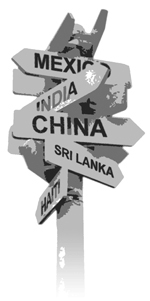
MFA was initially conceived as a temporary tool but it received four extensions – in 1977, 1981, 1986, and 1994 – which deepened its entrenchment and raised hopes for its permanence. However, once the World Trade Organization (WTO) was founded in 1995, it decided that MFA would be eventually dismantled in December 2004. The end of MFA fundamentally transformed the global garment industry – while countries like Nepal and Indonesia saw their industries virtually collapse, China and Bangladesh emerged as the winners of post-MFA competition. This supported neoliberal development that preached rock-bottom wages, unprotected conditions of work and insisting on buyer-regulated labor safety as the necessary evils for industry competitiveness.
MFA’s short time horizons along with the neoliberal preaching of “necessary evils” explain why most factory buildings in Bangladesh were built haphazardly, without acquiring the necessary clearance from the state agencies. The mayor who had issued construction permits to Rana Complex and hundreds of others, did so because the Dhaka building safety agency, the state body authorized to carry out this task, simply could not keep up with the explosive growth of the Bangladesh garment industry at this time. Under these circumstances, to make a lone producer and a select few of his buyers culprits of this devastating accident of unprecedented scale, and to let the bigger powers off the hook, is to spank a racist while turning a blind eye to the regime of apartheid. The crisis that triggered an unprecedented social upheaval leading to an erosion of political and social harmony in Bangladesh is as much about the failures of the global trade apparatus and the apathy of their developmental counterparts as it is about the Rana Complex and Joe Fresh.
Mallika Shakya, South Asian University, Delhi, India
This issue is not available yet in this language.
Request to be notified when the issue is available in your language.
If you prefer, you can access previous issues available in your language:




